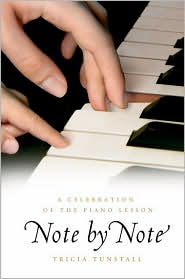My musical experience consists of several frustrating grade school years attempting to master the flute. So reading a book about piano lessons given by a middle-aged woman to intermediate students, those in the “long, layered stage in between, that protracted and tricky passage from novitiate to expert,” struck me at first as something akin to watching a televised golf tournament. It’s fascinating if you are a fan; otherwise, why bother?
However, unlike me, Tricia Tunstall discovered her talent early. As a 12-year-old, she struggled to make her small hands master Rachmaninoff in an effort to please Madame Dmitrieff, her fiery Russian piano teacher. She persevered and steadfastly learned to play more deeply and passionately.
Tunstall, who has written for Kenyon Review and The New York Times, spins her story by engaging her “finely tuned sense of rhythm and phrasing and wry humor,” highlighting what would seem to be obscure issues between teacher and student. Never would I have predicted that a discussion of finger exercises, or the contemplation of “the mysterious and ineffable differences between the tones produced by different pianists” could captivate me. I never questioned why children love classical music, when society steers them to pop.
Tunstall deftly weaves together memories of learning to play the piano with the stories of her students, gently rocking the reader back and forth from memory to the present. Note by Note is more than a celebration of piano lessons. It’s an entrée into a private world where courage, personal transformation, excitement, intimacy, beauty, and joy all occur within a quiet living room of a Maplewood, New Jersey, home.
—
Julie Foster is working on an MFA in Goucher College’s creative nonfiction program. Foster’s work has appeared in Publishers Weekly, Orion, the San Francisco Chronicle, and Western American Literature.

